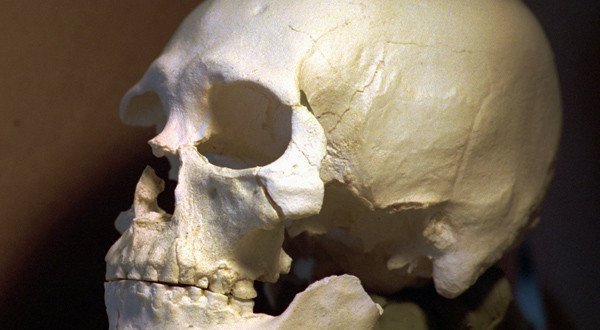Kennewick Man: Scientists unravel 9,300-year-old skeleton’s past
Source: latimes.com

The long-running detective saga involving one of North America’s earliest inhabitants has taken a new twist, with news that Kennewick Man — the shockingly intact 9,300-year-old skeleton unearthed in 1996 on the banks of the Columbia River — probably was a visitor to central Washington, not a longtime inhabitant.
More likely, Smithsonian Institution anthropologist Douglas Owsley announced in a pair of lectures this week in Washington state, he came from the coast, not the arid inland valley where his remains were found.
The conclusion is important in the quest to understand where the now-famous Paleoamerican came from and who his descendants might be. The ancient bones were the subject of a decade-long court fight over whether central Washington Native American tribes had claim to the remains for reburial.
"I felt it was important to have a meeting with the tribes of the Columbia Basin that are especially interested -- it’s their homeland territory, and they feel very deep connections and roots. I felt it of vital importance that I have a face-to-face meeting and give them an overview as to what the scientific evidence was telling us," Owsley said of his meeting this week with tribal leaders from the Columbia Plateau region.
Owsley, with science writer Susan Walker, has published a new book for teens: "Their Skeletons Speak: Kennewick Man and the Paleoamerican World," in which he describes the painstaking process through which scientists have come to understand the mysterious man found by two youths watching a boat race.
Through carbon dating and other means, analysts relatively quickly determined that the skeleton was not that of a recent murder victim but an ancient clue to how human civilization arrived in North America.
Kennewick Man was 5’6” to 5’7”, weighed 154 to 165 pounds, and had strong, powerful legs, as would someone who moved quickly in water to spear fish or hunt small animals, Owsley says in the book.
His had not been an easy life. He had a depression in his skull above the left eye where he must have fallen or been struck by a rock; he had a healed fracture of his right shoulder; he had a shoulder injury, most likely from repeated spear throwing, identical to the kind of injury baseball pitchers often suffer; and there was evidence of a terrible spear wound to his right hip, probably suffered when he was between 15 and 20 years old.
“During the days immediately following the injury, Kennewick Man could barely stand. Shock and pain left him weak. He needed care and help.
[...]
Read the full article at: latimes.com

The finished face of Kennewick Man, as reconstructed by Jim Chatters and Thomas McClelland.






















